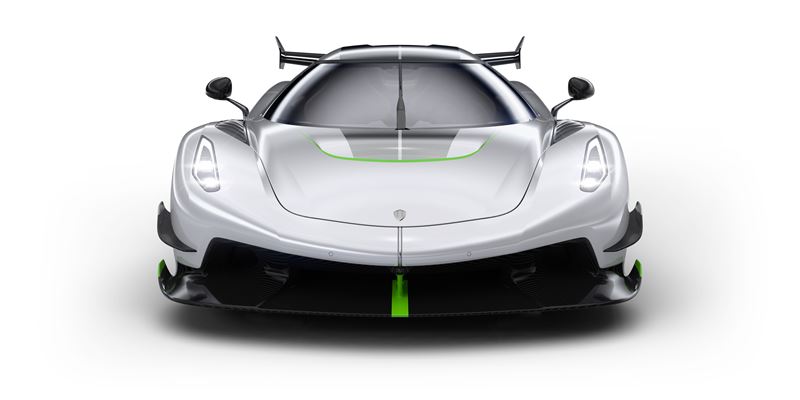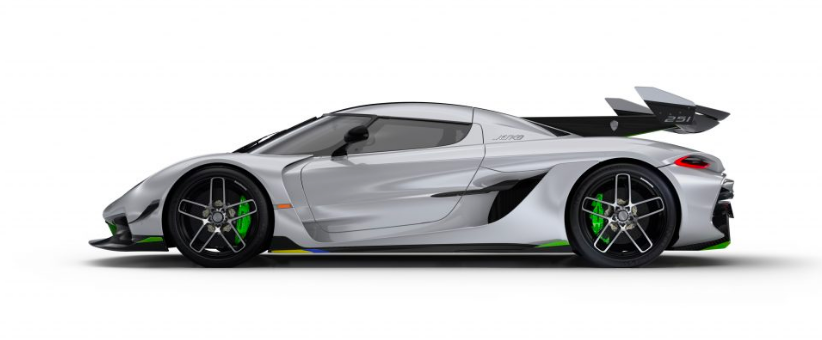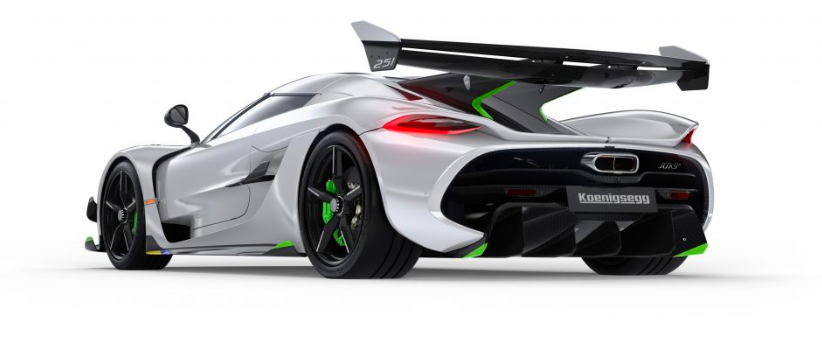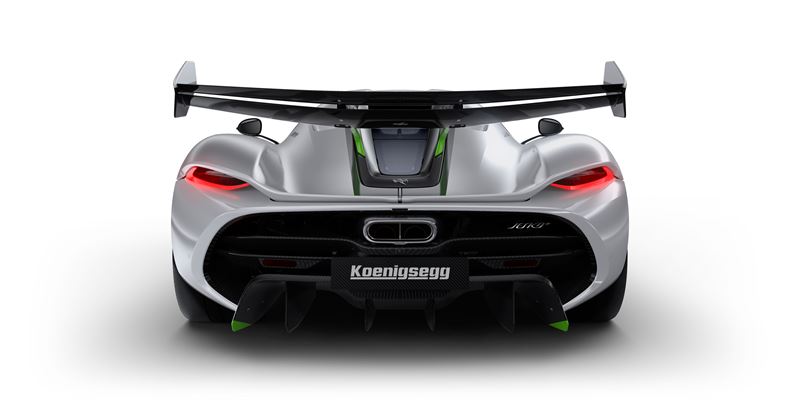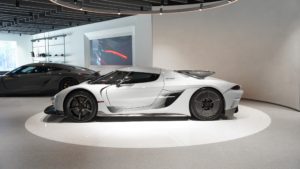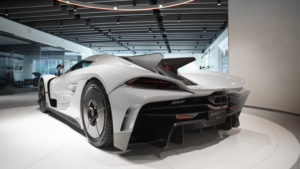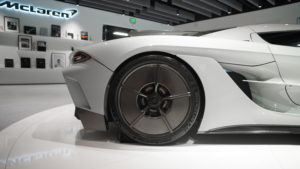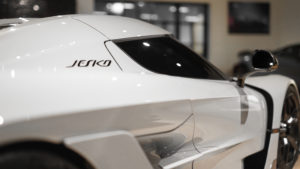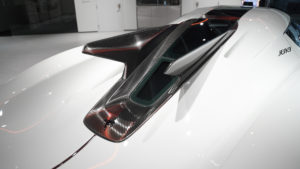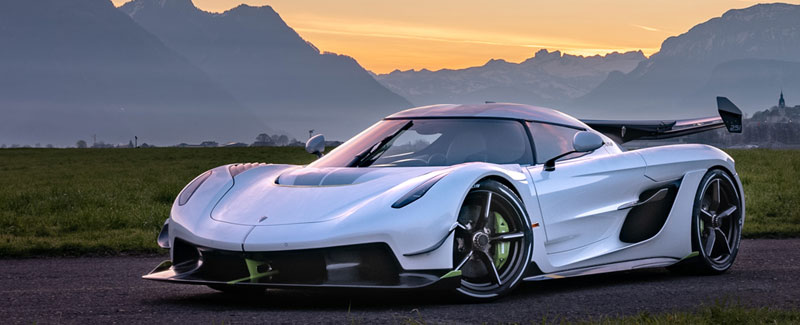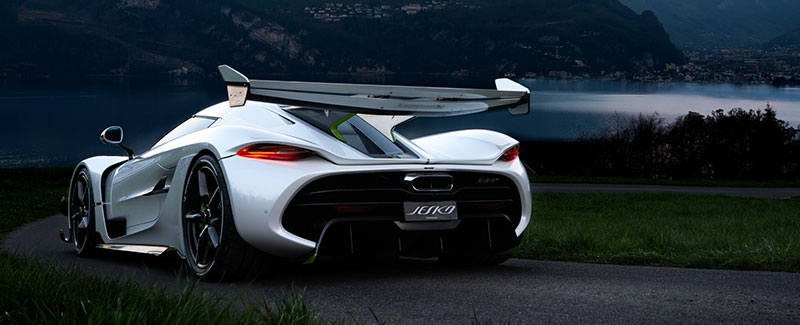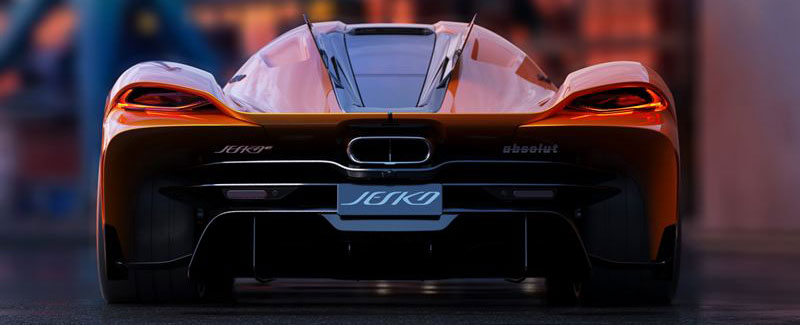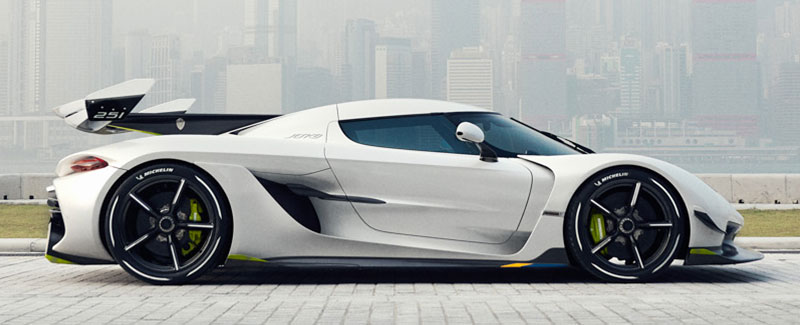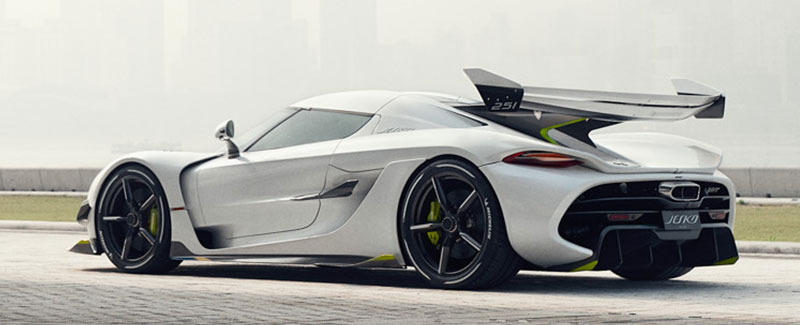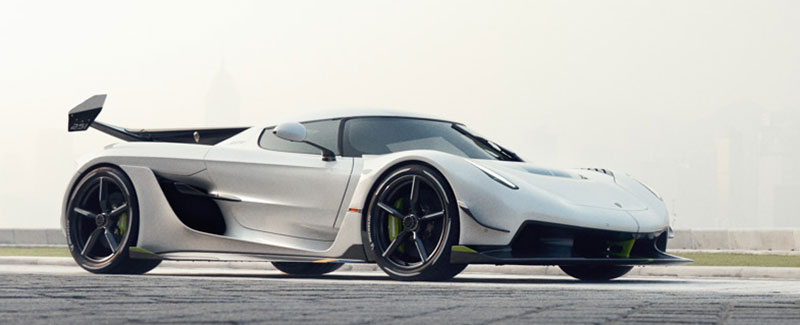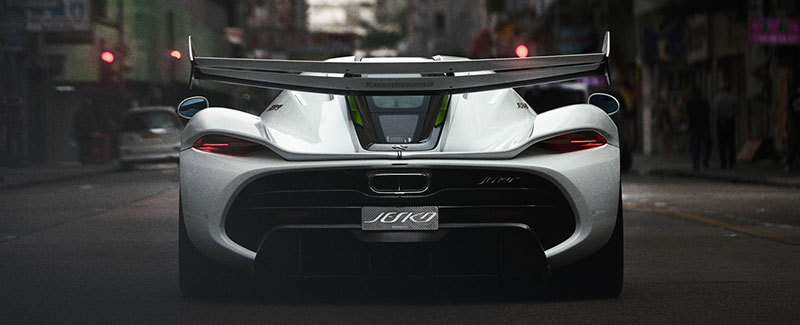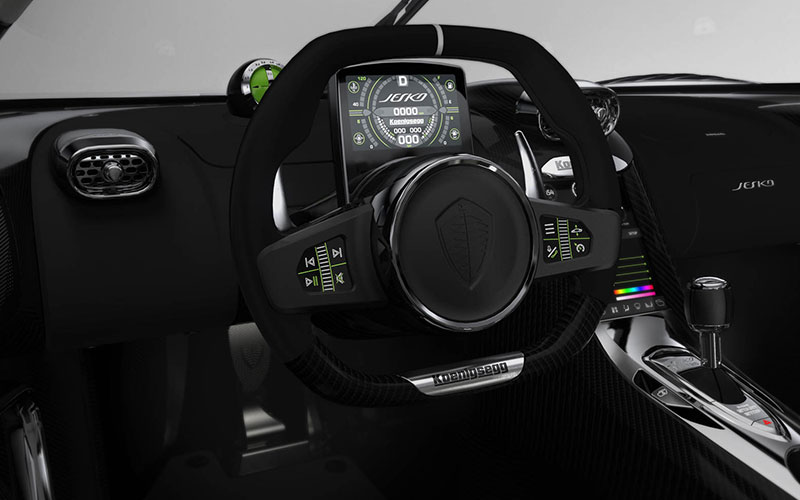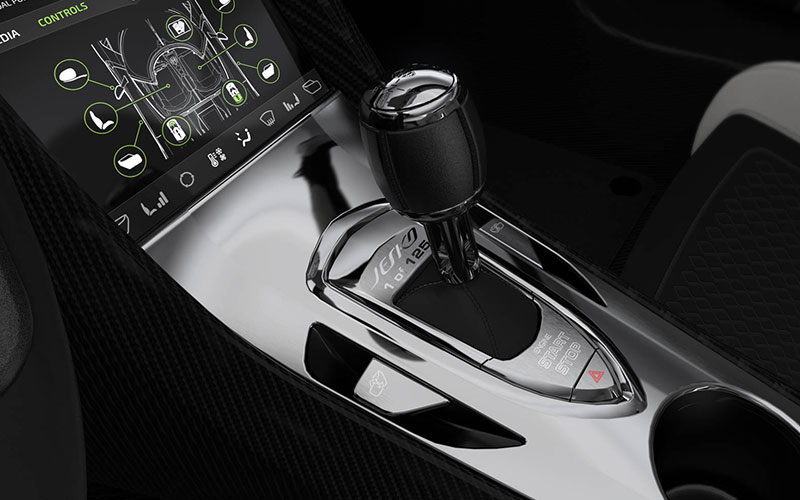Design
The all-new Koenigsegg Jesko is the successor to the Agera line in the Koenigsegg portfolio and has inherited not only a place in the lineup, but a rich design heritage, as well. The shape is instantly familiar and there are a number of design cues that tip their hat in respect to the outgoing Agera. The dip between the rear lamps, for example, which is present, but done in a more modern way. The wraparound windscreen is there, too, but now has more of a fighter jet stance thanks to a taller roof line. The headlamps were given a more dynamic approach, morphing closer to the Regera shape but retaining an identity of their own.
Cues from the Regera do not stop there. Jesko has a similar design at the rear with an open design for increased airflow and an exhaust reminiscent of the inverter heat extraction outlet on the Regera. The air ducts at the front wheel are also similar.
Jesko looks smaller than the Agera and Regera, thanks to it having more shape around the wheels. It’s actually 30mm taller and 40mm longer than the Agera, which allows for better ingress and egress, a more spacious cabin and better visibility.
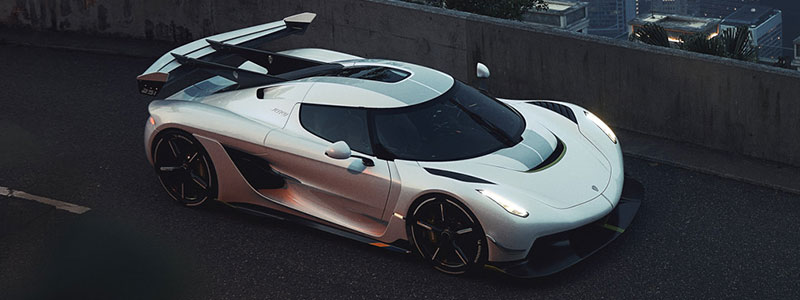
AERODYNAMICS
The Koenigsegg Jesko features aerodynamics designed with one goal in mind – blistering on-track performance. As Jesko is an all-new vehicle, Koenigsegg went back to the drawing board and designed an all-new rear wing, new front splitter and new rear diffuser. These form the core of an active aerodynamics and airflow package that maximises downforce while minimising drag. The signature, airplane-like wrap-around windscreen stays intact, albeit improved for visibility. The Koenigsegg wrap-around windscreen has always played a crucial role in the aerodynamic performance of Koenigsegg cars, as no other windscreen solution can offer the same drag efficiency and high-speed stability. It also reduces upper body lift and delivers high quality airflow to the rear wing.
The new double-profile rear wing has been placed as far back as possible for maximum downforce and increased control. Following a design first used in the Koenigsegg One:1, the wing is top-mounted to minimise disturbance on the underside of the wing – the surface most responsible for providing downforce. The wing is boomerang shaped, mirroring the rear curvature of the car as closely as possible in order to maximise the wing’s surface area and ensure the most extreme rearward positioning. The new rear wing is a double-profile design that allows a higher angle of attack without stalling the wing, resulting in higher downforce.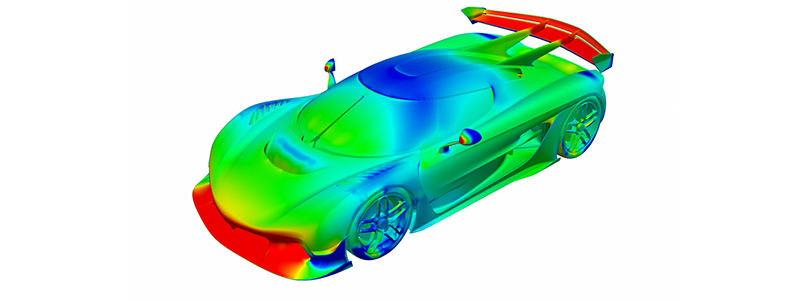
FRONT SPLITTER
The front splitter is the deepest/longest ever used on a Koenigsegg car and features integrated active flaps underneath to maximise on-track performance. Flap size has been increased to balance the front of the car against the enlarged rear wing. This balance is critical in managing over/understeer. The active front flaps can even assist with preserving the nose of the car, releasing downforce during braking to prevent the front of the car from scraping against the road. The design process for Jesko has been a constant dance between aesthetics and airflow. Panel surfaces were designed, then flow-tested, re-designed, then flow-tested – again and again. This evolution led us to a design that remains visually stunning while delivering astounding aerodynamic capability.
Airflow efficiency is critical for two reasons. First, to direct air where it’s needed, whether it be for downforce, for engine intake or for cooling. Second, to direct excess air as efficiently as possible to avoid turbulence, which results in drag. Jesko has been designed with this in mind, using the air to push the car into the tarmac while at the same time, passing through that air in as slippery a manner as possible. The rear wing angle is variable, capable of either maximum downforce or low drag settings, which are controlled automatically depending on driving conditions.









